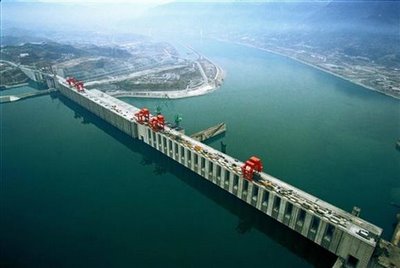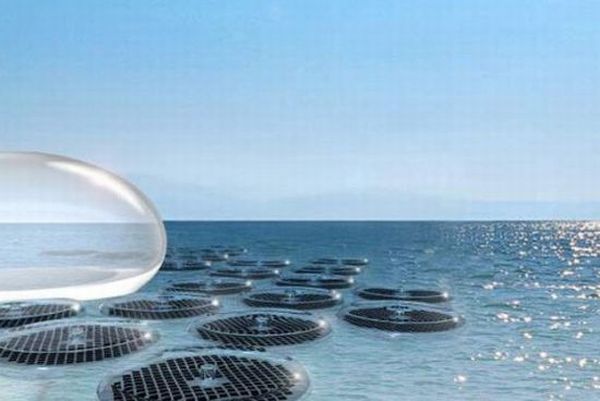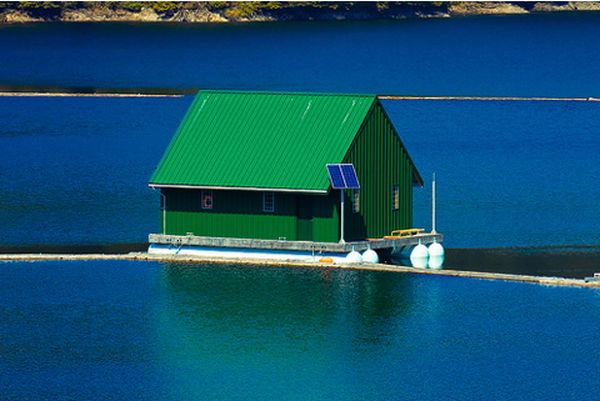
Since the evolution of man, this world has seen tremendous changes and developments. When the natural settings of most of the interiors of the world’s landmass are not favorable for geographical and economical developments of that province, we have thought and devised the phenomenon called dams. Today there are thousands and crores of dams built all over the world, but which of those are the significant ones? Let us take a look at some of the world’s largest dams in the reverse chronological order one by one.
1. Oahe dam
a. Location – South Dakota, United States
b. Capacity – 70,339 cubic meters
c. Construction completion year – 1962
d. Dam height – 75 meters
e. Spillway Capacity – 56,000 cubic feet per second
A fairly large dam constructed along the Missouri river. The construction of this dam started in year 1948 and it took 14 years for completion. The fourth largest manmade water reservoir/lake, named after the dam as ‘Lake Oahe’ is a result of this vast dam. The total cost of construction of Oahe dam is $340,000,000. This dam produces a large amount of electricity which suffices most of the north-central US. Additionally this dam also aids in irrigation, food control and electricity. An estimation of per year profit reckoned by army corps of engineers is $150,000,000.
2. Guri dam (Raúl Leoni)
a. Location – BolÃvar State, Venezuela
b. Capacity – 78,000 cubic meters
c. Construction completion year – 1978
d. Dam height – 162 meters
e. Spillway Capacity – 953,496 cubic feet per second
This 1300 meters long and 162 m in height dam, is known to produce world’s third largest amount of electricity every year, despite of its limited coverage. The Guri dam has an installed capacity of 10,200 MW and it actually generates 47,000 GWh of electricity every year. Since the year 2000, this dam is undertaken by the government of Venezuela for refurbishment and fine tuning of the various turbines. This dam is constructed over the Caroni river in Venezuela.
3. Yacyretá-Apipe
a. Location – Ayolas, Paraguay
b. Capacity – 81,000 cubic meter
c. Construction completion year – 1994
d. Dam height – 148 meters
e. Spillway Capacity – 1,942,307 cubic feet per second
The Yacyretá-Apipe dam is named after the Yacyretá Island located in the northern end of the dam. Constructed over the Paraná River, the dam runs 808 meters and designed to produce electricity equal to 4,050 MW. The only issue of the dam as of today is that it only operates at only 60% of its total capacity due to the sole reason that its reservoir is 7 meters below its planned water level.
4. Atatürk dam
a. Location – Anatolia, Turkey
b. Capacity – 84,500 cubic meter
c. Construction completion year – 1990
d. Dam height – 169 meters
e. Spillway Capacity – 600,350 cubic feet per second
A rock filled dam having a central core, built on the Euphrates river created turkey’s third largest lake named by the dam as Atatürk Lake. And the name of this dam is given behind the founder of the Turkish republic, Mustafa Kemal Atatürk. Prior to the design development of this dam there was a proposal of another dam called ‘Middle Karababa Dam’. But in the course of time until 1970 the government realized the need of a more larger and capable dam due to the rapid development. Thus the design of this dam was proposed and approved. The dam now generates a total of 8,900 GWh electricity every year.
5. Tucurui dam
a. Location – Tucurui , Brazil
b. Capacity – 85,200 cubic meter
c. Construction completion year – 1984
d. Dam height – 78 meters
e. Spillway Capacity – 3,900,000 cubic feet per second
This one is a large concrete gravity dam constructed over the Tocantins river in Brazil. The dam was made to meet the cater the electricity consumption needs of the nearby settlement and towns. This dam is well known for its world’s second largest spillway capacity of 110,000 meters cube per second. This is a valuable developmental endeavor for the Brazilians as it provides electricity to around 13 million people, annually.
6. Lower Usuma
a. Location – Abuja , Nigeria
b. Capacity – 93,000 cubic meter
c. Construction completion year – 1990
d. Dam height – 171 meters
e. Spillway Capacity – 4,100,000 cubic feet per second
The Lower Usuma dam was built in 1990 in the vicinity of the new capital of Nigeria, Abuja. Strategically this dam has been the back-bone of Nigeria in terms of harvesting of national natural water and economy resources. The dam deploys 5 water treatment plants over its course, which provides water treatment and filtration facilities in Nigeria.
7. Fort Peck
a. Location – Montana, United States
b. Capacity – 96,049 cubic meter
c. Construction completion year – 1940
d. Dam height – 76 meters
e. Spillway Capacity – 250,000 cubic feet per second
This dam is named after a trading station in the early 19th century called the Fort-Peck Trading Post. In the year 1932 the proposal of a dam for Montana was made in order to eradicate the issues of water scarcity to the farming in Montana province. The town of Fort Peck came into existence due to this dam only. In the year 1936 the project provided employment to more than 10,500 people in the form of dam construction. The dam is built over the river Missouri and is 21,026 feet in length. The dam was responsible for the creation of the ‘Fort Peck Lake’ which is the 5th largest man-made lake in US. The dam produces a total of 185 MW of electricity annually. The project cost a sum of $100 million.
8. Tarbela dam
a. Location – Haripur , Pakistan
b. Capacity – 121,720 cubic meter
c. Construction completion year – 1974
d. Dam height – 143 meters
e. Spillway Capacity – 650,000 cubic feet per second
This dam is world’s third largest dam in terms of storage capacity and second largest in terms of structural volume. The Tarbela dam is constructed over the Indus river at Haripur district in Pakistan. The dam created the Tarbela reservoir which induced the displacement of 135 villages clustered around the course of the Indus river, which made the 96,000 people to migrate in the distant higher plateaus. This dam generates 3,478 MW of electricity every year. Today it is one of the major sources of economical as well as agricultural development in the un-developed country of Pakistan.
9. Samara/Zhiguli dam
a. Location – Zhigulyovsk , Russia
b. Capacity – 169,000,000 cubic meter
c. Construction completion year – 1957
d. Dam height – 52 meters
e. Spillway Capacity – 1,400,000 cubic feet per second
Being the world’s second largest dam, the samara or Zhiguli dam is considered to be a prestigious project in the history of dam-engineering in the world. The Samara hydroelectric station produces a whooping 10, 500 GWh of electricity per year. There are 17 turbines of the capacity of 65 MW and 3 turbines of 120 MW capacity, deployed over a stretch of 2800 meters of dam length. An interesting fact about this dam states that in the year 1940 (the year in which the proposed site of the dam was under survey) the technicians found the presence of oil fields in the nearby catchment areas; this caused the ongoing developmental processes to halt. In reality the proposal of Samara dam was made in the 1st quarter of 1937, approved in 1950 and the construction began in the same year.
10. Three Gorges Dam
a. Location – Sandouping, China
b. Capacity – 39,300,000 cubic meter
c. Construction completion year – 2006
d. Dam height – 181 meters
e. Spillway Capacity – 4,100,000 cubic feet per second
Three Gorges dam is world’s largest dam (in terms of its storage capacity). The dam also happens to be the second largest to generate electricity, generating about 20,300 MW per year. The dam equips 32 turbines over its length to harness this 20, 300 MW of electricity. Although the dam was completed officially in the year 2006, still the up-gradation work is going on and is slated to reach the target capacity of producing 22,500 MW annually. The benefits of this dam include, increased shipping capacity of the river Yangtze, reduces the possibility of flood in the radius of about 885 km by 82 % and other irrigational benefits. The total cost of construction for this project was $26 billion.




